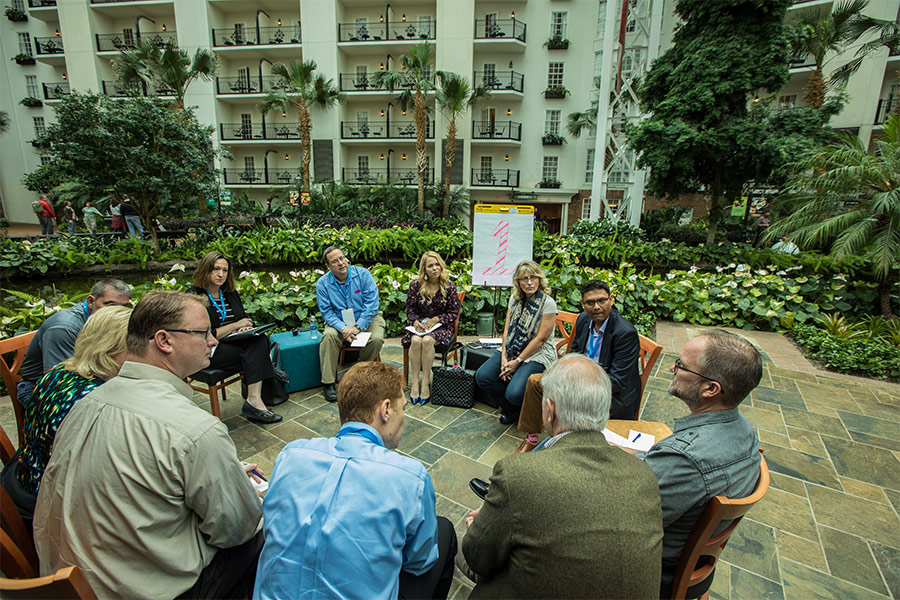
Vidyo Healthcare Summit attendees discuss breaking the barriers of telemedicine during the unconference
As the sales leader at Vidyo for Government, Education and Medical Sales, I found our Inaugural Healthcare Summit to be a fantastic opportunity to engage with healthcare leaders, and to better understand their requirements and mission-critical needs.
I facilitated several topics at our unconventional yet educational unconference, and one session really stood out: “Accommodating Demographic Diversity in Telemedicine.” Taking the patients’ point of view as a factor for successful telemedicine adoption is critical. Having real empathy and being aware of their diversity and catering to them through the delivery of telemedicine is truly important. It can dramatically increase patient satisfaction.
The participants passionately shared examples that showed how accommodating demographic diversity can make a difference. Simple considerations like scheduling or noting stigmas attached to certain cultures or religions can help providers adjust how to care for a more diverse group of patients. The consistent theme was awareness. Being able and willing to relate to the personal experiences and needs of different patient populations should be a high priority for all healthcare providers. A lack of diversity within the staff of a healthcare provider, whether by race, gender, economics, ethnicity or sexual orientation, can drive patients to seek care elsewhere.
When healthcare providers make a point to be aware of these factors and have demographic data to support that awareness, it makes a big difference. You can’t properly design a healthcare system or provide the right kind of care without knowing who you serve. In fact, according to a recent Politico article, diversity is top of mind for medical schools as they train the future generation of physicians. There is more focus on recruiting minority students and training all medical students to consider their own biases as a way to gain perspective on cultural differences.
The group discussed “Bridges out of Poverty”, which is a powerful tool, designed specifically for social, health, and legal service professionals to gain insight into the populations they serve. Many healthcare professionals use this program as they seek to diversify their care. Akron Children’s Hospital is just one of our customers experiencing a real difference with this program. They found that understanding patient demographics and accommodating their needs can be applied to something as easy as scheduling a patient visit. If a patient has to take two buses to arrive at a doctor’s appointment, and then arrives late only to be turned away, it has a huge impact on patient satisfaction. In this specific instance, simply making scheduling adjustments can help. Taking into account additional time constraints or scheduling a telemedicine visit so that travel becomes unnecessary can be the answer to the problem.
Stigmas associated with mental health and depression can sometimes be associated with certain cultural or religious beliefs (this of course is not true all of the time). These stigmas can be a deterrent to seeking and receiving critical help.The group discussed how one organization, the “Big White Wall: Expanding Mental Health Access through the Digital Sphere,” allows people to anonymously seek mental health and wellbeing services, 24/7. Online digital platforms like the Big White Wall and technology like Vidyo’s, which powers many telepsych practices, allow people to seek help quickly, from the comfort of their home environment. This is an important alternative care solution for those experiencing depression, anxiety, and other issues.
At the end of the discussion, there was a consensus that workforce diversity in healthcare is one of the many tools that can help engage with a growing diverse patient population. Additionally, technology, like Viyo’s, can help positively impact the delivery of care and support demographic diversity in telemedicine.
Recent Comments